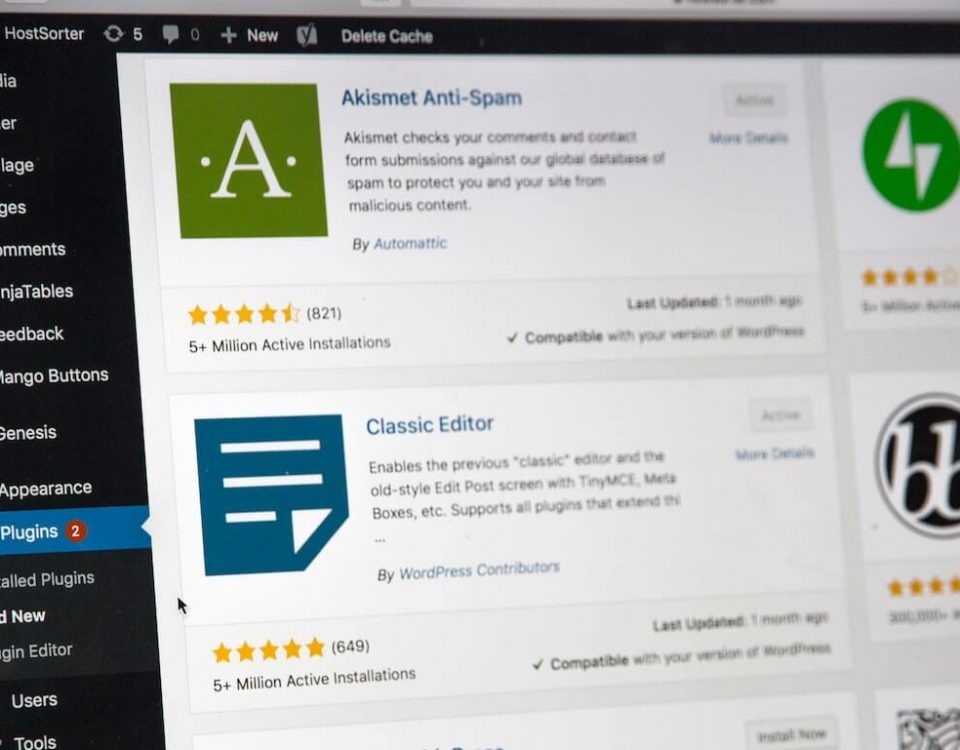Google Launches The New Mobile Friendly Update

WordPress Errors? These Five Hacks Will Have You On Your Way
May 5, 2016
What is Growth Driven Design
June 3, 2016We all know how important is to have a mobile friendly website, but last week this became more important than ever because Google rolled out the second version of the mobile-friendly update.
Google Webmaster Trends Analyst John Mueller announced it on Twitter, saying, “The mobile changes mentioned here are now fully rolled out”. According to Google, “Mobile May” mobile friendly update will only affect mobile sites. If your website is already mobile friendly, you will not be impacted by this update. However, if your web site is not mobile-friendly or if you want to check whether your website has a mobile-friendly design you should visit Google mobile-friendly tool and Google’s mobile guidelines. It is never too late to benefit from this mobile friendly algorithm.
What is Mobilegeddon?
The first mobile friendly algorithm, also known as “Mobilegeddon” was launched on April 21, 2015. The main effect of this update was to give priority to websites that display well on smartphones and other mobile devices. However, the change did not affect searches made from a desktop computer or a laptop.
What is mobile friendly website?
A mobile friendly website is one that displays correctly on hand-held devices such as smartphones, iPhones, iPads, and tablets. It also has following features:
- Loads fast – this is especially important for visitors using a mobile network and mobile devices
- Easy to read – mobile phone screens are 1/5ththe size of desktop computers
- Easy to navigate – menus have limited space on mobile devices, so it needs to be easy to navigate with a finger
- Minimal scrolling – not just vertically but also horizontally
- Avoids using Flash – flash-based content is not mobile friendly, if you want to use animations consider using other technologies like HTML 5
Types of mobile friendly websites
Google recognizes three different configurations as mobile friendly:
- Responsive Design – Responsive design is Google’s first recommended design pattern. If you opt for responsive design, there is no need for developing two (or even more) versions of the website, one is more than enough. A website that is designed and developed in responsive manner adapts and changes its layout depending on the device visitors use. Regardless of whether the website is viewed from a mobile phone, tablet, laptop or desktop, each web page has only one URL and Google has to crawl and index only one version of that page. The bottom line is that a responsive website provides an excellent experience for both visitors and search engines.
- Dynamic Serving – As described on Google Developers pages “Dynamic serving is a setup where the server responds with different HTML (and CSS) on the same URL depending on the user agent requesting the page. Dynamic serving uses user-agents to determine what kind of device the viewer is using and then dynamically serve up the appropriate view. Google notes that this user-agent detection can be an error-prone technique, but it is an option that passes the Google mobile-optimization test.
- Mobile Website – Creating an actual mobile website was one of the earliest versions of the mobile optimization movement and, although not suggested, these mobile sites still pass Google requirements. Every time a visitor lands on a web page, the mobile website configuration tries to detect the user’s type of device and redirect that user to the appropriate website using redirects. There are several problems with this type of configuration, though. First, this set up requires two versions of your website and two versions of each page. This means that Google has to crawl and index both versions of your website. Second, there are two URL’s for each page of your website and that will cause serious problems, not to mention the inevitable challenges of sharing pages through social or email while on a desktop computer. Last, but not least in importance, is that you have to manage two versions of the same website.
What happens if I don’t have a mobile friendly website?
It is more likely for users to search on a mobile device than a desktop computer. Therefore, if your website is not mobile friendly, it will not show up on mobile searches and you will miss the opportunity to get new website visitors. If your website is not mobile-friendly and you regularly have good visibility when it comes to search engines, this algorithm can weaken your search engine page results.
Until you get a mobile friendly website, your search rankings will suffer.
Google has issued the statement that it’s still possible for your non-mobile friendly website to rank high if it has a significant amount of relevant and original content.
What are the benefits of having a mobile friendly website?
There are many benefits of having a mobile friendly website, including ranking higher on mobile searches. Another benefit is that the user’s experience is better. If you are on a mobile device and looking at a website that is not mobile friendly, it can be hard to read the content and navigate the site. If a visitor cannot easily read or navigate your site on their mobile device, they will leave quickly. Having an easy to read and navigate mobile-friendly site builds credibility as it is an indicator that you care about creating a convenient experience for your customers. This is a big credibility factor and it will work in your favor over and over again.
How can I make my website mobile friendly?
As a first step, get a thorough analysis of your website and a comprehensive search engine optimization report card.
Click the large graphic below and we’ll provide you with a detailed analysis of your website, including Google’s position on the mobile-friendliness of your website. We’ll also provide:
- steps to improve search engine ranking and your site’s performance
- steps you can take to increase targeted organic traffic
- identify any needed technical and design improvements that could improve website performance
- information you can take action on to improve your search engine rankings, traffic and conversions
Get your FREE analysis and report today!





